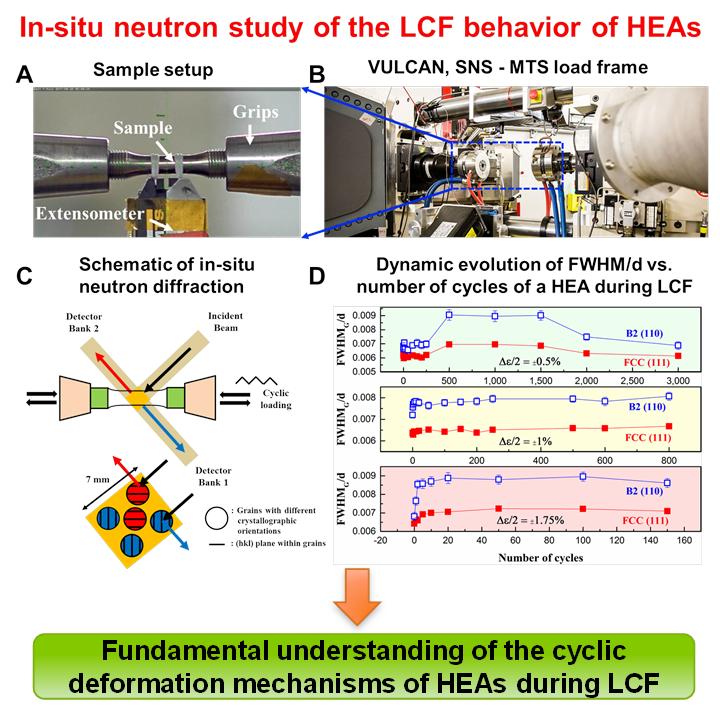June 1, 2019

Fatigue failures in engineering structures can cause catastrophic accidents without any obvious warning. Understanding cyclic-deformation and fatigue failure mechanisms is critical for designing fatigue-resistant novel structure materials. Recently, an intriguing new class of metallic structural materials – High-Entropy Alloys (HEAs), shows great potential in the engineering field. However, the fundamental understanding of the fatigue behavior that is strongly correlated with practical applications is very scarce.
Neutrons have the advantage of measuring the atomic and mesoscale response in bulk materials by collecting the information on the phase-specific lattice strains, textures, slips, as well as phase transformations, and are often used for understanding mechanical plastic deformations. To dynamically unravel the deformation modes at different strain amplitudes, the real-time in-situ neutron diffraction was performed on HEAs during the fully-reversed low-cycle-fatigue (LCF) deformation. This work paves the way to design novel fatigue-resistant materials by the means of the HEA concept.
Challenges We Are Working On
Complications of the plastic deformation due to multiple deformation mechanisms could be triggered at different cyclic stages, which in turn make the understanding more challenging. Moreover, the diverse characteristics in HEAs, such as the severe lattice distortion, great tendency to form twins, and obvious short-range ordering (SRO), can strongly affect the cyclic-plastic deformation. Thus, it becomes obviously critical regarding understanding LCF properties: (i) how are the LCF behaviors of HEAs, compared with conventional materials?; (ii) is there any unique cyclic-deformation mechanisms in HEAs?; and (iii) what are the fundamental contributing factors in governing the fatigue behavior in HEAs? To draw a full picture of fatigue-deformation mechanisms and accelerate the engineering applications of HEAs, these critical issues need to be carefully addressed.
Here we use the in-situ neutron diffraction and detailed microstructural characterizations to provide real-time insights into the LCF deformation mechanisms of HEAs. Guided by this work, a new design strategy to integrate cyclic-deformation mechanisms for designing LCF-resistant HEAs is provided.
Collaborations
ORNL; University of Tennessee, Knoxville; Eötvös University Budapest (Hungary)